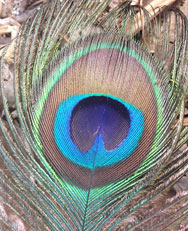Peacock Needle Case
Un merci tout spécial à Jean Louis Gueritte pour le partage de ces photographies avec nous
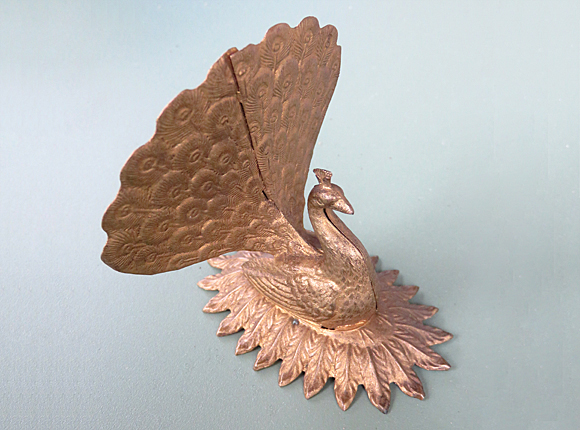
Needle Case (photographs courtesy of Jean Louis Gueritte from France)
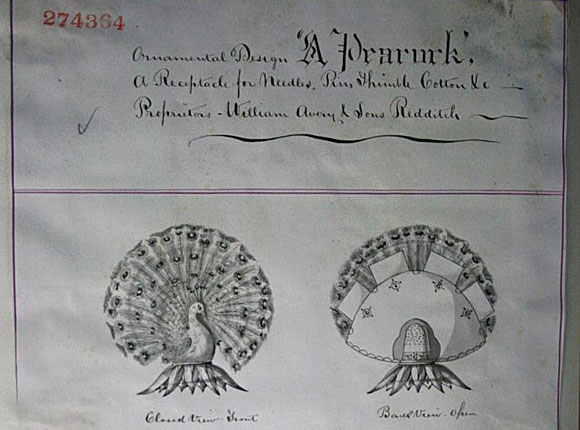
Design Representation
Design Details
Needle Case Type: |
Figural |
Patent/Registered to: |
William Avery & Son - Redditch |
Patent/Design Representation #: |
Ornamental Class 1: Metal: #274364 |
Patent/Design Registration Date: |
July 11, 1873 |
Location of Patent/Design Registration: |
The National Archives (TNA) - Kew, UK |
Reference #:
|
TNA Representation - BT 43/34/274364
TNA Register - BT 44/3/274364 |
Dimensions: |
appromimately 7 centimeters x 5 centimenters |
Material: |
Brass |
Name Variations: |
W. Avery & Son - Redditch |
Other Variations: |
None |
Additional Photographs
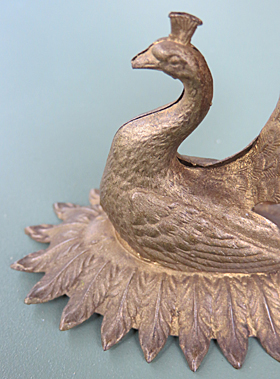
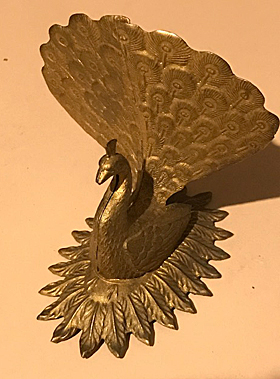
Side view and another view from the front
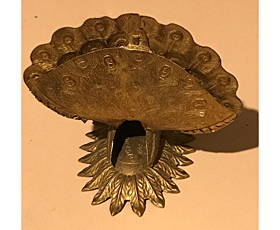
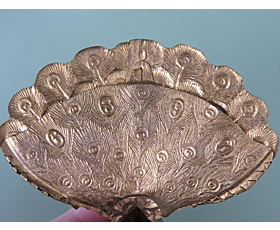
Back view of the tail feathers with a close up of the numbered slots for needle packets
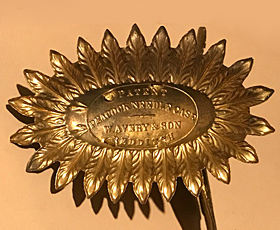
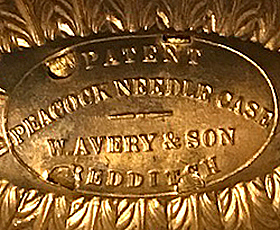
Bottom and close up of the Avery signature
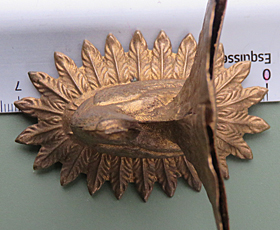
View from the top looking down
Facts
Although most people immediately recognize the peacock, many don’t realize that this name only refers to the male of the species. The
female is called a peahen and the correct name for this type of bird is peafowl. There are only three species of peafowl in the world
and they are found in India, Southeast Asia and the Congo. The Indian variety is the most common because it is the one typically found
in zoos and parks. The main reason for it popularity is that the male has the most colorful and ornate tail feathers.
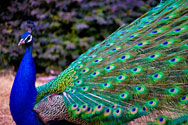
History
Since ancient times the peacock had been a symbol of wealth, beauty and rebirth. Hera, the Classical Greek goddess of woman and
marriage, was often depicted riding in a chariot pulled by peacocks. During the Middle Ages peacocks symbolized Christ’s
resurrection. By the middle of the 19th century the peacock design became popular in Great Britain. This was likely due to the
British Empire gaining control of India, the “jewel of the British Crown”, in 1858. The Victorians liked exotic motifs and the peacock
fit the bill. Peacock themed jewelry, fans, fabrics, wallpaper and other ornamentation became common. The Victorians went so far as to
create imagery like the chromolithographic drawing below showing two children in an egg- shape cart pulled by a pair of peacocks. Click
on the picture below to see a larger version of it.
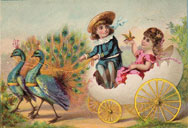
Miscellaneous
While the male peacock has ornate and colorful plumage, the female peahen is dull grey and brown by comparison. The reason for this
is that the male uses his bright feathers to attract a mate whereas the female, who is responsible for raising the young chicks, needs to
blend into her surroundings so predators won’t disturb her nest. Peacock feathers are bright iridescent green, blue, gold and black
with spots that resemble eyes. Today in Great Britain one occasionally sees a peacock ‘strut his stuff’ on the grounds of a castle,
palace or country estate.
